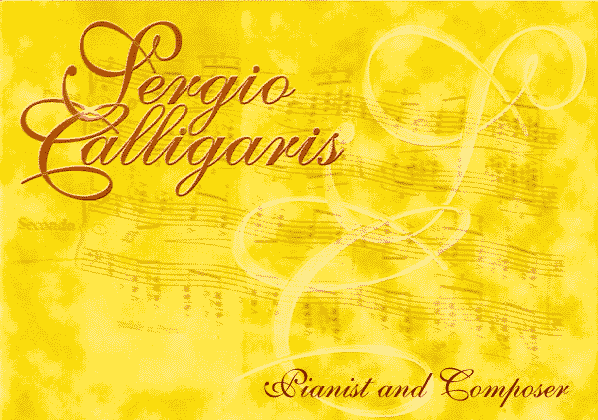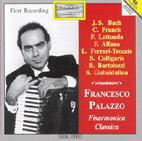
Sergio Calligaris
The author and performer's recordings
Tracks 13-15, "Preludio, Corale e Finale", op.33
(1994) From J.S.Bach to our times, The accordion, a proteiform instrument that came on the musical scene in the early
nineteenth century and still in constant evolution today, is proposed on thi CD in a
classic style. The strongpoints of the new Italian classic accordion school are due to its drawing from the old "keyboard" literature (from Claudio Merulo to J.S.Bach with Die Kunst der Fuge BWV1080), recovery of the main part of the traditional Italian and foreign accordion repertory reworked and filtered through a complex work of critical revision and promotion of an original repertory of classical origin, also thanks to the highly important contribution of composers such as Bruno Bartolozzi, Gaetano Gianni-Luporini, Pier Luigi Zangelmi and Boris Porena. The present program fully represents the requirements of this new ideology and in fact mainly concerns the following points: the keyboard literature, several important organ compositions, recovery of the tradition and "new sound" of the accordion. [...] Clearly Romantic in style, Preludio, Corale e Finale by the composer of
Argentine origin, Sergio Calligaris. © 2000 - Francesco Palazzo FRANCESCO PALAZZO was born in Martina Franca
in 1969, studied with Salvatore di Gesualdo and obtained the diploma in 1994 (the first in
Italy) at the "L.Cherubini" Conservatory of Florence, completing his training
through humanistic studies, Composition, Choir music and Choir conducting. Critical remarks: ...Francesco Palazzo is a highly talented musician, gifted with wonderful expressive and technical qualities; hence an element that raises the accordion to unexpected artistic heights... (Aldo Ciccolini) ...A pondered touch and strict tone-control... A highly reasoned Bach, with no concessions to superficiality or any forcing... When played this way, the classical accordion becomes a truly noble instrument... (L'Arena, Verona - Italy) A technically flawless execution and deeply emotional interpretation... With his accordion he cuts motes of pure crystal... (Il Corriere di Roma, Rome - Italy) The intensity of his interpretation and his technical masterly could not be further from the stereotype of the accordion... It was almost a concert-lecture... (Barisera, Bari - Italy) |
Edited by Renzo
Trabucco: Page updated to 02/06/2001
Materials©Nuova Carisch s.r.l.
